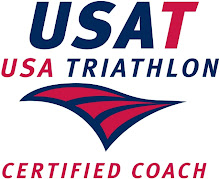 My story starts out as any tomboy story would. I spent all the growing up years playing sports as much as possible and trying to get out of brushing my hair or wearing a dress. That athletic drive led me somehow into running cross country as a sophomore in high school and from that point on I only competed as a distance runner through high school and then in college. I had definitely defined a part of myself as being a runner.
My story starts out as any tomboy story would. I spent all the growing up years playing sports as much as possible and trying to get out of brushing my hair or wearing a dress. That athletic drive led me somehow into running cross country as a sophomore in high school and from that point on I only competed as a distance runner through high school and then in college. I had definitely defined a part of myself as being a runner.Sometimes, though, life throws out a trial that forces one to look a little deeper into oneself in order to deepen their self definition. That trial started out as a car accident in March of 1998. A typical case of walking away from the crash sight having no idea what was about to REALLY hit me. For the next 2 years, I struggled with back pain. I tried to deal with it by reducing running volume and doing some chiropractic care. The reality was that for 18 months it just wouldn’t go away and evolved into back/butt/and leg pain. At times, it hurt a lot. I couldn’t raise my right leg up off the floor more than a couple inches or sit, or tie my shoe and I definitely couldn’t run consistently. Then, being stubbornly prideful, in a lot of pain and refusing not “to be runner,” I ran a 5k when I was 7 months pregnant. That stupid decision sent me straight to the floor for the next 5 months. I couldn’t walk easily, or sit, or sleep or do much of anything but feel the intense pain 24 hours a day from the waist down. I cried everyday for those 5 months.
So there I was at the age of 29, lying on the floor trying to take care of 3 boys the age of 4, 9 months and newborn. My 9 month old was adopted as an infant, by the way, in case that math didn’t quite add in your brain. And while my husband and I had added to our family, part of my identity had been taken away. My life’s pendulum had swung the opposite way from being an elite distance runner to being an out of shape, depressed and undirected person. Where had “I” gone for the last 2 years? It was at this desperate point that I was forced to more earnestly to discover who I was and where I was going with my life. “There is no way that I was sent to earth to try and raise a family while lying on the floor living in pain and crying everyday!” And you know, it is really interesting what happens when you become filled with a personal vision of the next phase of your life.
I started to look for a different way to heal my pain inside and out. That was not all roses though. During the worst doctors appointment of my life I had a condescending surgeon tell me, after looking at my MRI, that I was without hope of running again and the best I could hope for was to take up walking. He patronized me for wanting more than that and then scooted me out of his office while still giggling under his breathe like I was crazy to think there was any other way to get better. Talk about fuel for the fire!! I knew beyond a shadow of a doubt from that point on that I was looking for the right people and tools to help me through the healing process. I finally knew that I wasn’t looking for a cure. My whole paradigm shifted and my journey towards real healing began.
It took a year of rehab and then another 10 months in order to be ready to run a marathon. I had never even run one before the car accident, but now it was my way of expressing to the whole world that miracles happen and dreams do come true. It wasn’t fast and I haven’t run one since, but rehabbing from a 2 year long battle with my back and getting ready for it helped me to understand more deeply what other people suffer. I had suffered on every level of body, mind and spirit and definitely learned what it felt like to not be in elite shape. I had to fight for those first steps of running again. It was only 5 or 10 minutes at a time, but I was so happy, I cried every time I ran for several months. I was very grateful to be able to exercise again.
Even though I was swimming as part of my rehab process, it was completely unexpected that I would fall into the sport of triathlon and end up racing at an elite level again at the age of 32. I carried my lessons with me though and I am a better athlete because of it. And now, at the age of 38, I let those competitive seasons ebb and flow based on the other areas of my life. At the end of the day, I now know that I am a women, wife, mother, sister and friend who adores the daily ritual of pursuing an athletic goal. I AM NOT A TRIATHLETE OR A RUNNER. As Eckhart Tolle would say, I learned that “I AM”…and giving myself to my family and friends is really what makes my life the most meaningful.










